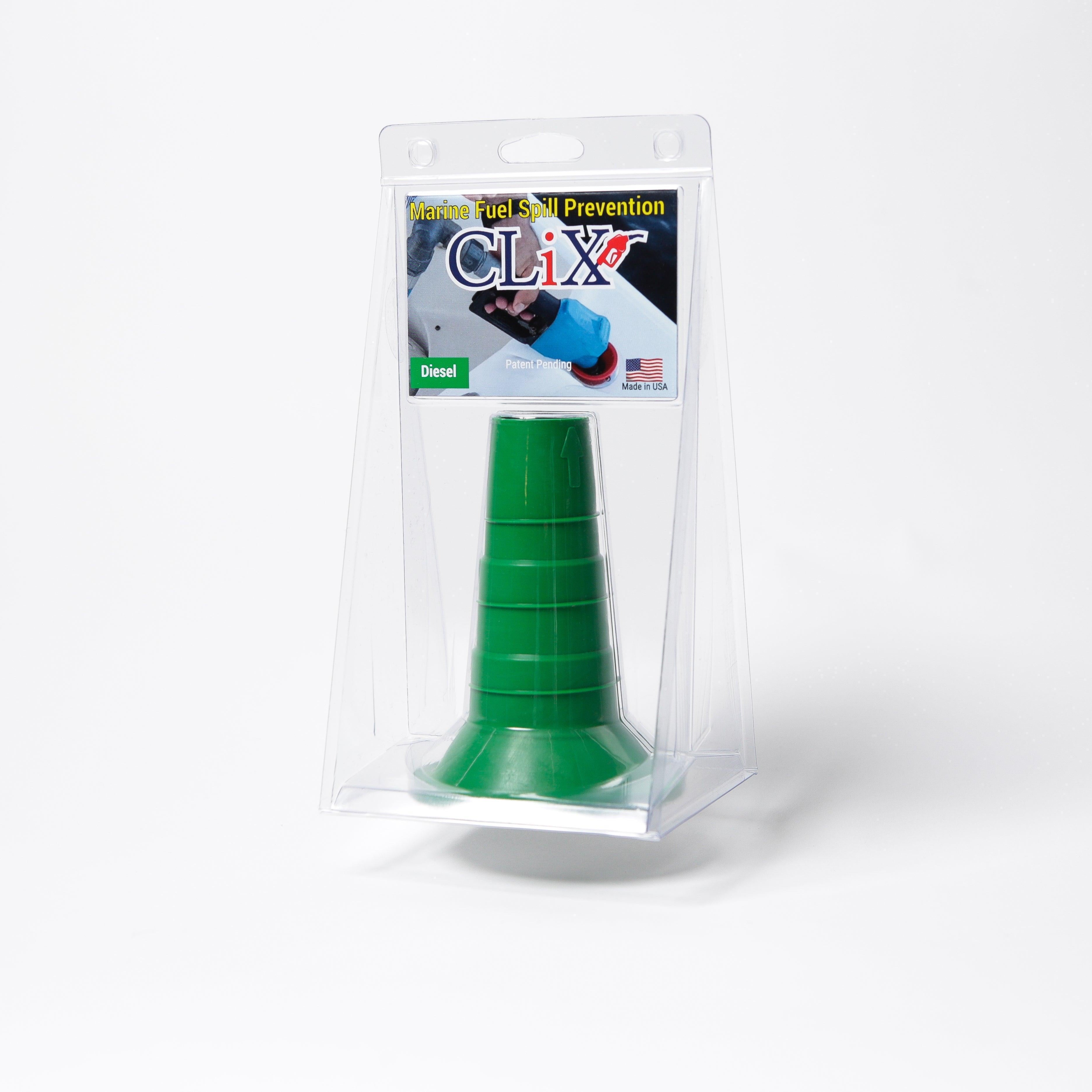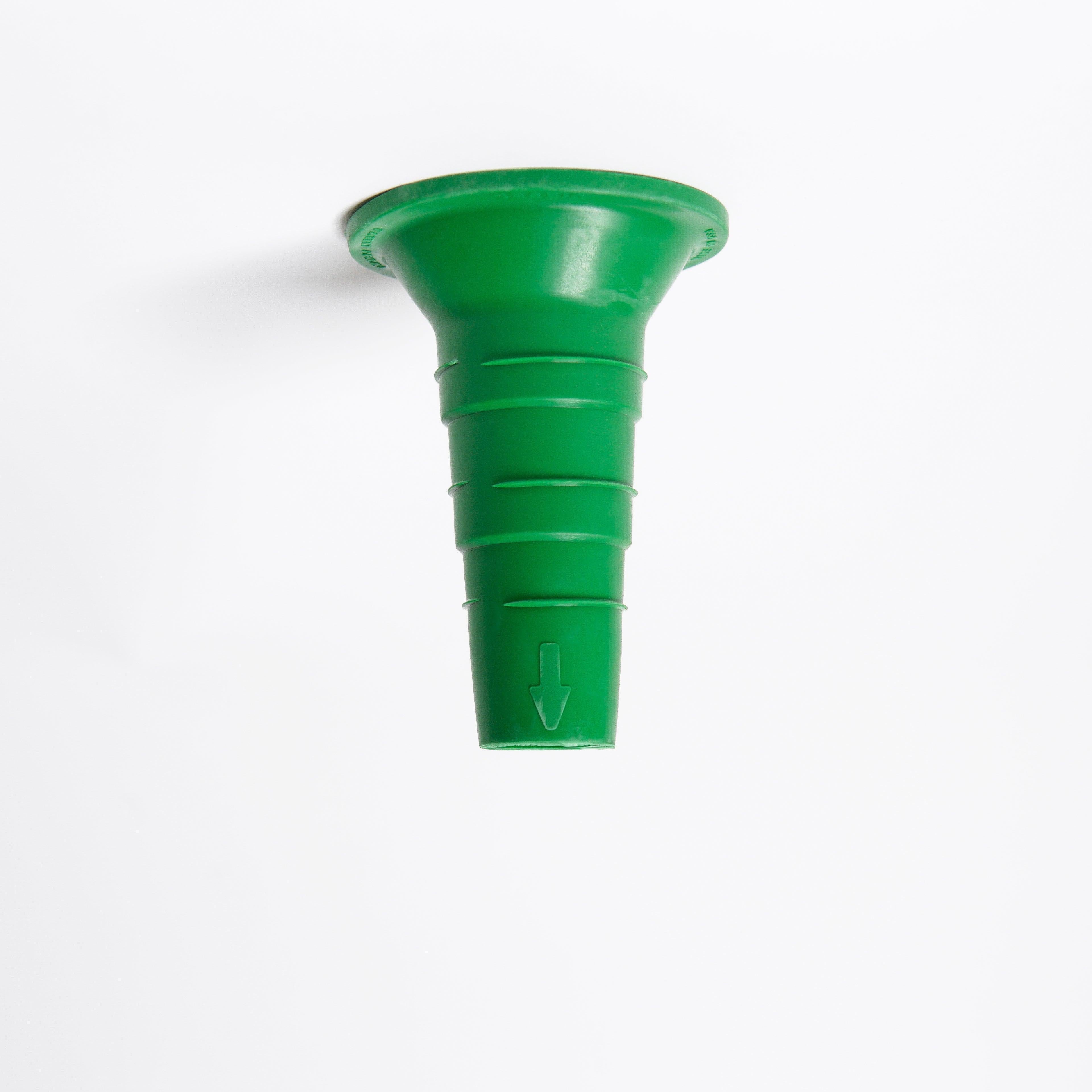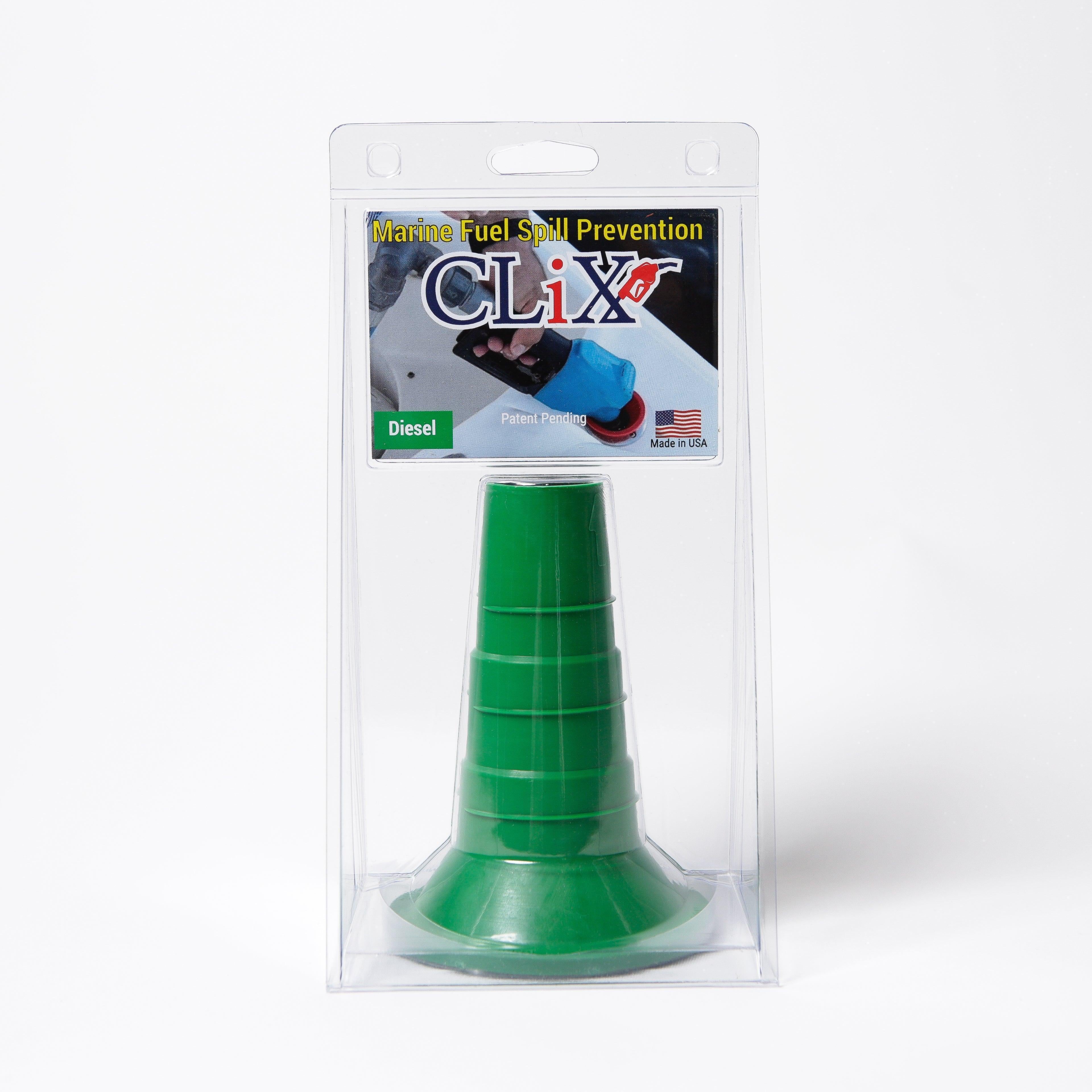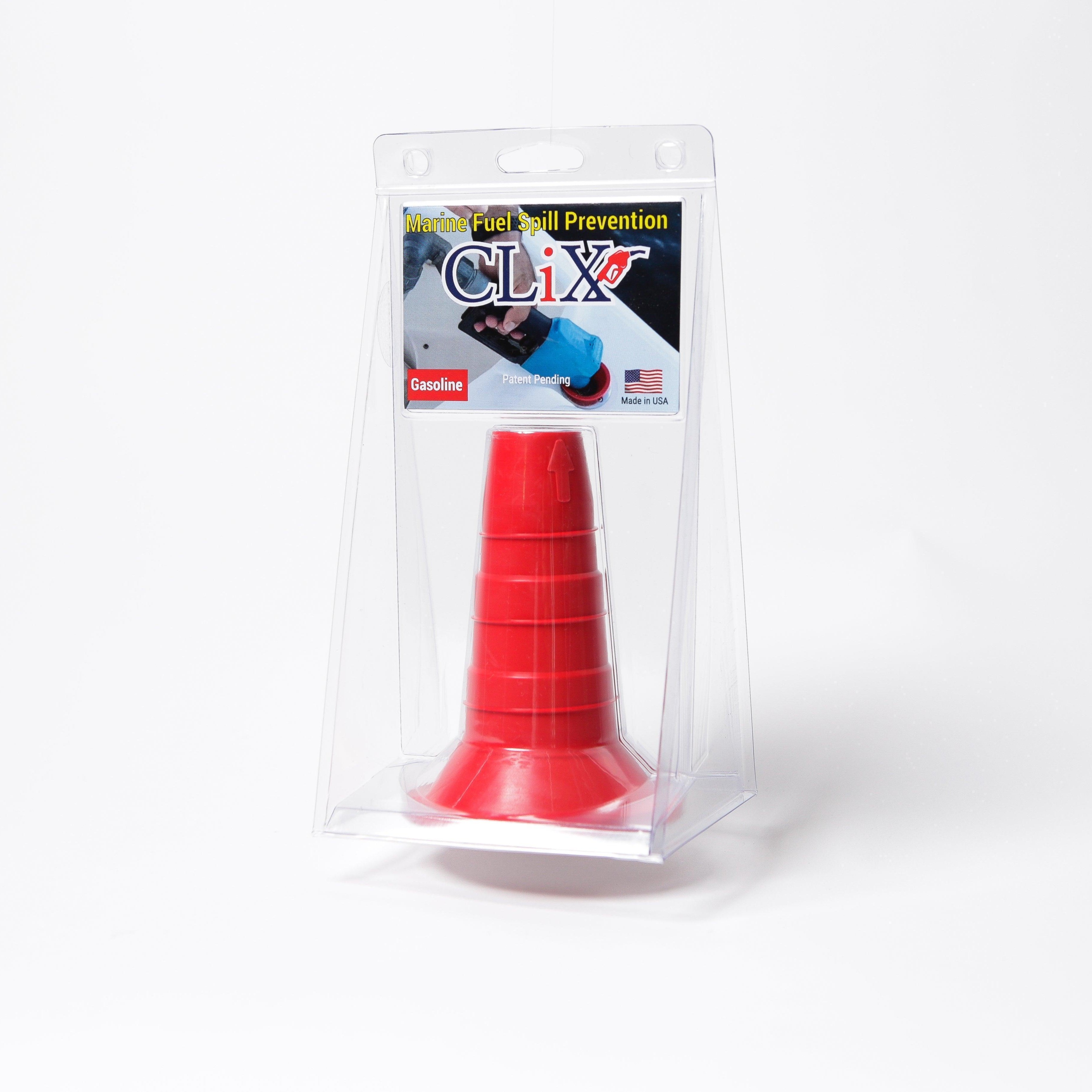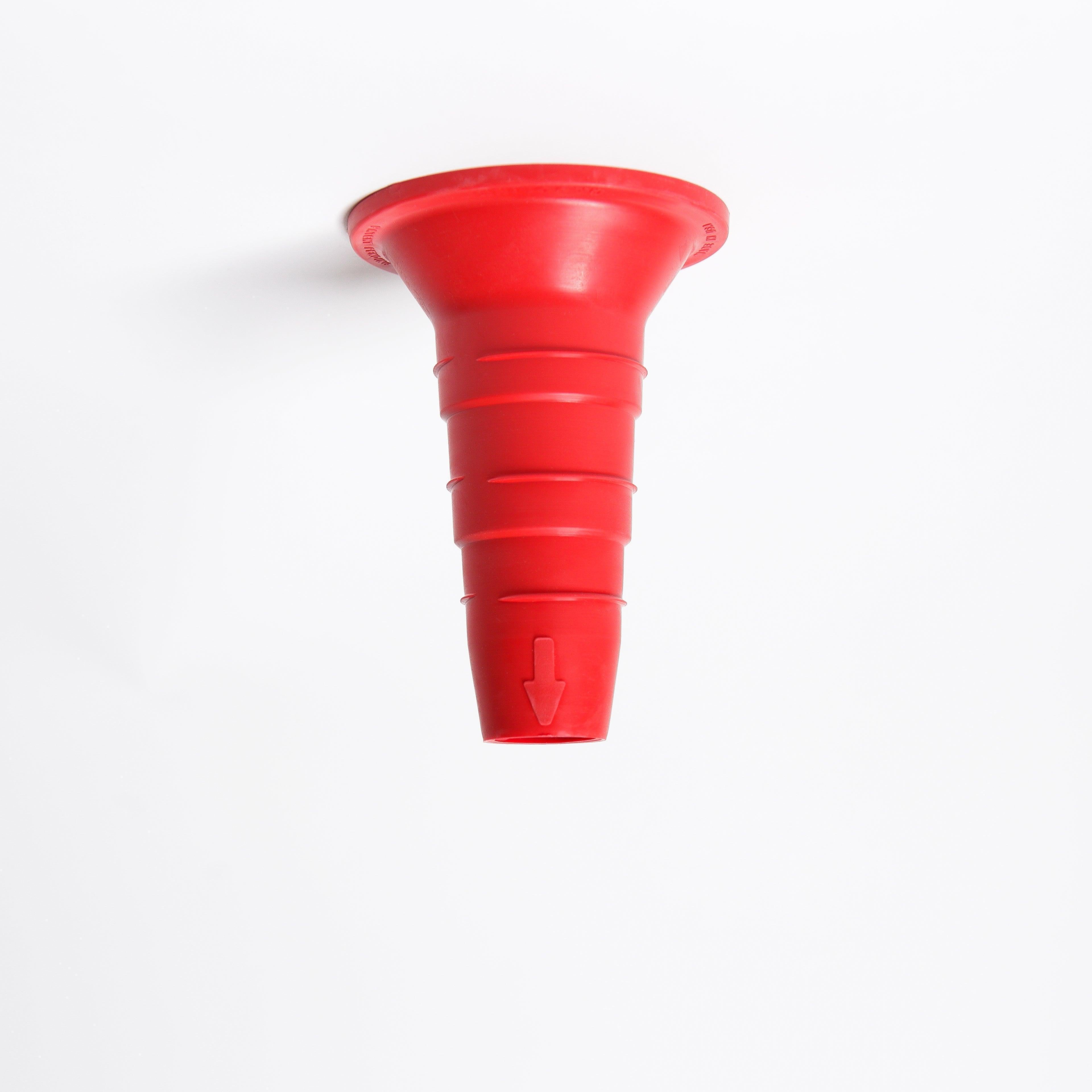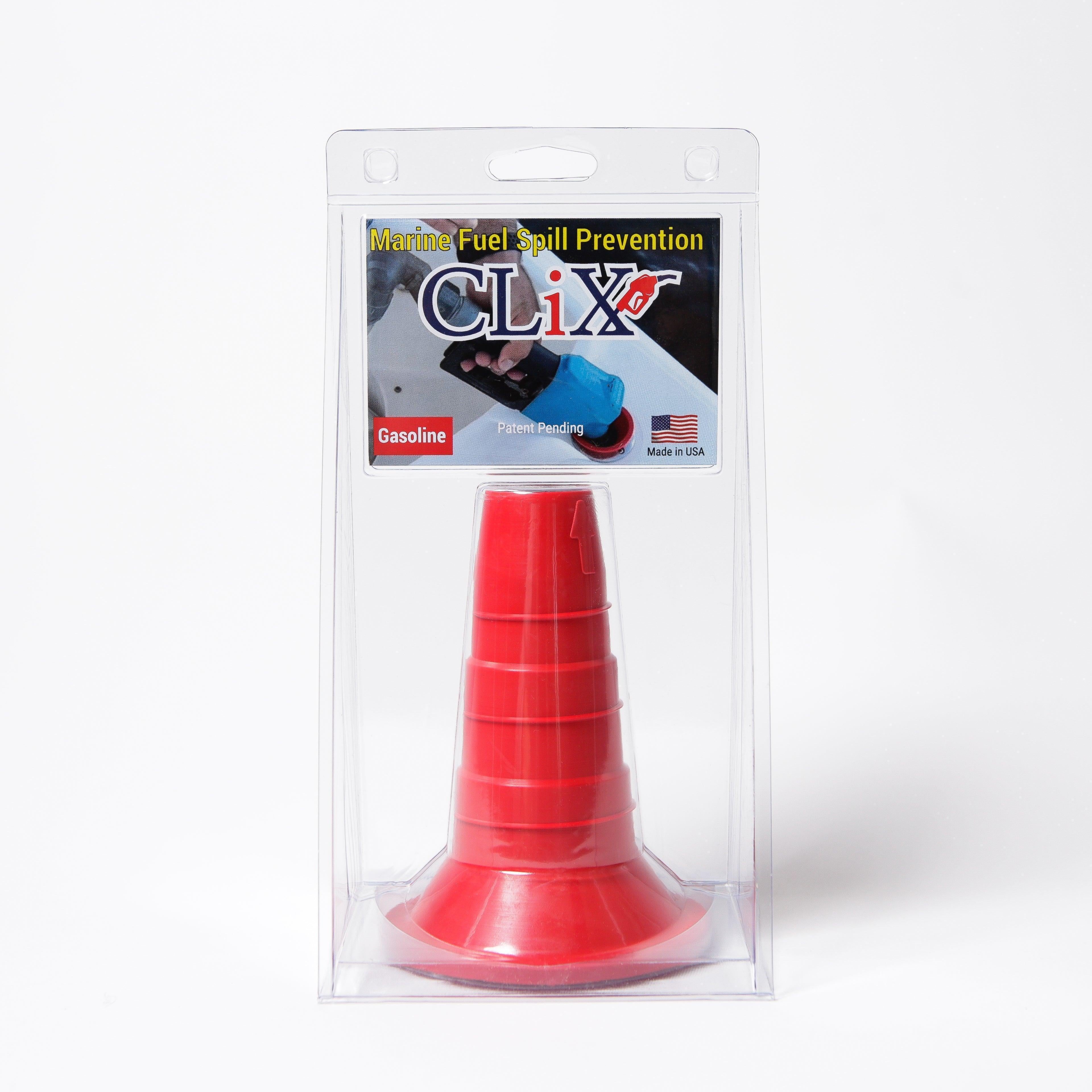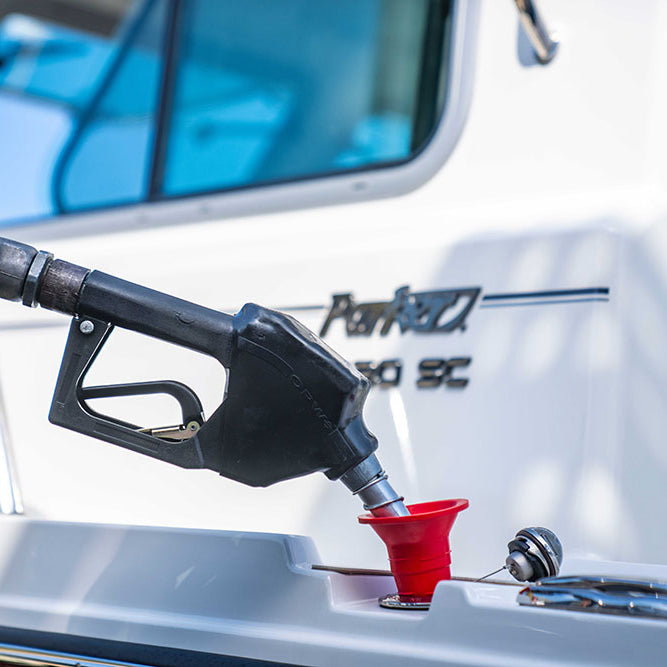Navigating the World of Boat Fuel Tank Materials
Choosing the right boat fuel tank involves more than just picking a size. The material of your tank plays a crucial role in its longevity, safety, and performance. This section explores the key differences between common materials: aluminum, stainless steel, and polyethylene. Understanding these differences will help you select the best option for your boating needs.
Aluminum Boat Fuel Tanks: Lightweight and Corrosion-Resistant
Aluminum tanks are prized for their lightweight nature, making them ideal for boaters looking to maximize performance and fuel efficiency. This reduced weight contributes to better handling and lower fuel consumption. Additionally, aluminum offers inherent corrosion resistance, especially important in marine environments. However, it's worth noting that aluminum can be susceptible to certain types of corrosion if not properly protected, particularly in saltwater.
Stainless Steel Boat Fuel Tanks: Durable and Robust
For maximum durability, stainless steel tanks are often the top choice. They are incredibly strong and resistant to impacts. Stainless steel offers excellent corrosion resistance in most marine environments. This robustness comes at a price: stainless steel is significantly heavier than aluminum. This added weight can impact a boat's performance and fuel economy.
Polyethylene Boat Fuel Tanks: Flexible and Cost-Effective
Polyethylene tanks have gained popularity due to their flexibility and cost-effectiveness. They are lightweight and resistant to corrosion. They can also be molded into various shapes, allowing them to fit into tight spaces within a boat's hull. However, polyethylene tanks are generally not as durable as aluminum or stainless steel and may be more susceptible to damage from impacts or UV exposure.
The global fuel tank market, encompassing various applications including marine, is experiencing significant growth. Valued at USD 18.82 billion in 2023, it's projected to reach USD 29.93 billion by 2031, growing at a CAGR of 4.75%. This expansion is driven by rising vehicle production and advancements in fuel tank manufacturing, including innovations in lightweight materials like plastic and aluminum. Find more detailed statistics here. This growth underscores the increasing demand for efficient and durable fuel storage solutions.
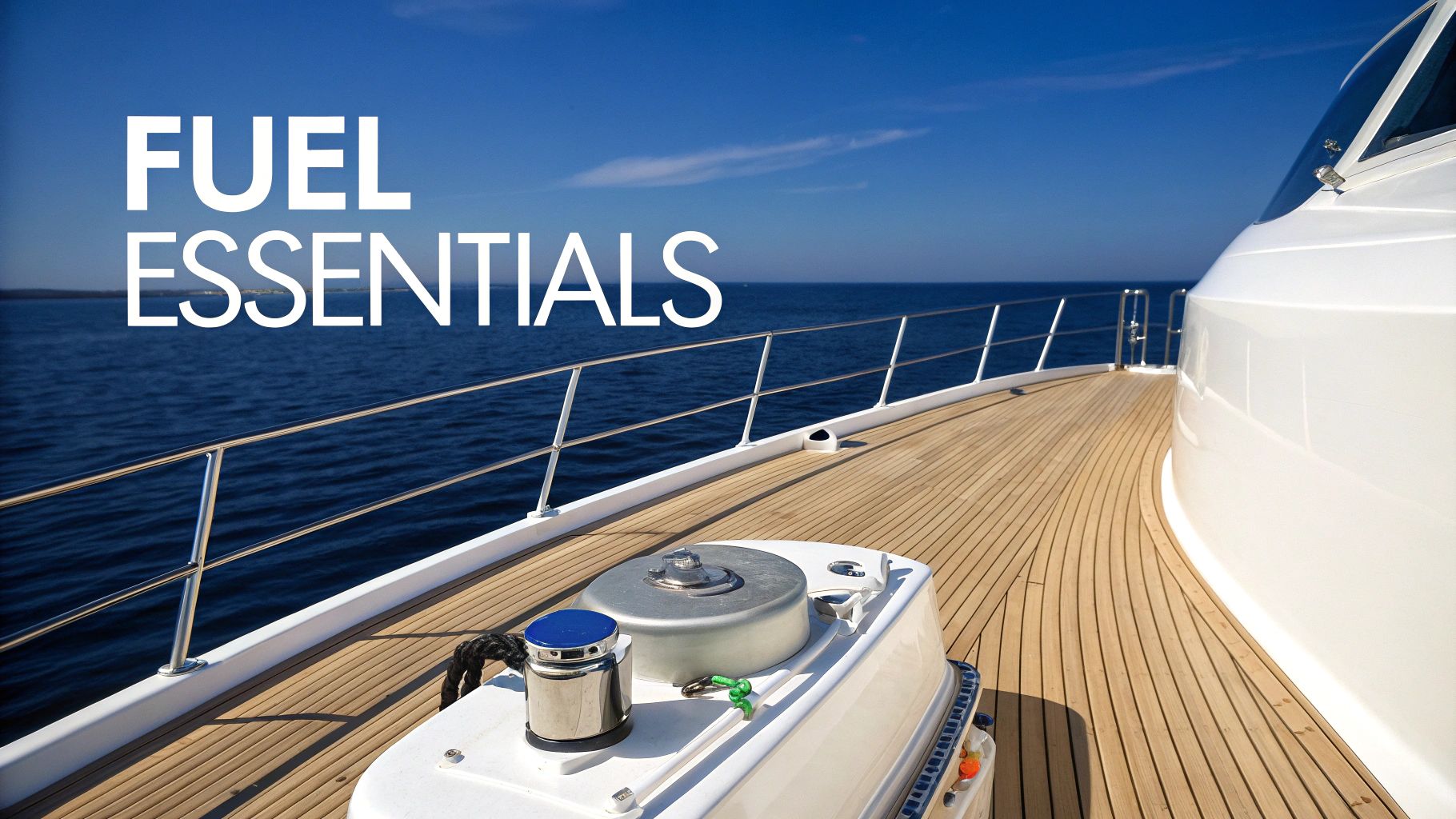
Choosing the Right Material for Your Boat Fuel Tank
Selecting the ideal boat fuel tank material depends on several factors:
- Boating Environment: Saltwater demands materials with high corrosion resistance, such as stainless steel or properly coated aluminum.
- Boat Type and Size: Smaller boats benefit from the lighter weight of aluminum or polyethylene, while larger vessels can accommodate stainless steel.
- Budget: Polyethylene tanks are generally the most affordable, followed by aluminum, then stainless steel.
- Performance Needs: Boaters prioritizing speed and efficiency may prefer lightweight aluminum.
You might be interested in: Learning more about our sitemap. Understanding these factors will guide you toward a boat fuel tank that provides optimal performance, longevity, and safety.
Right-Sizing Your Boat Fuel Tank: Finding the Sweet Spot
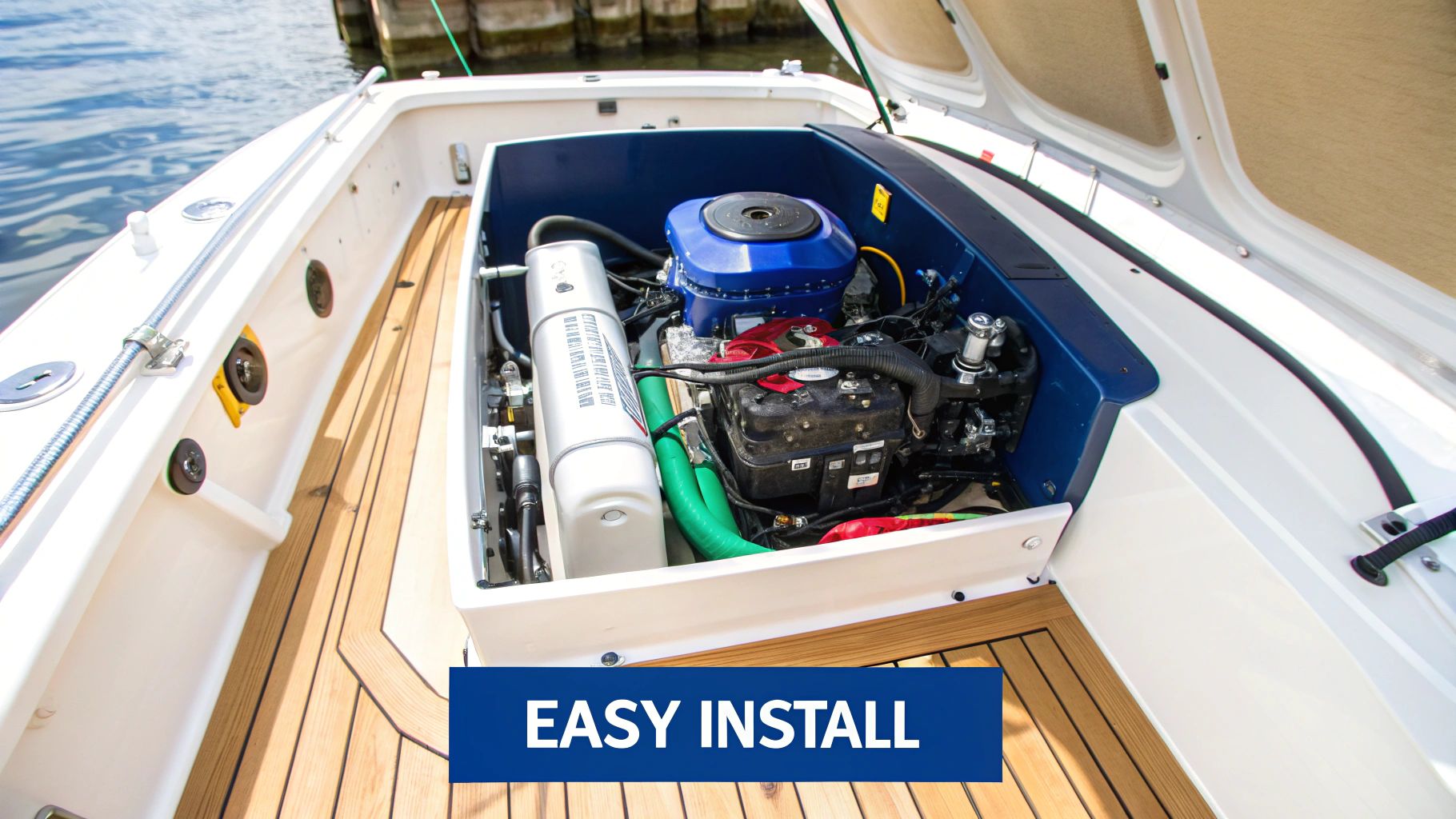
After selecting the right material for your boat's fuel tank, the next important decision is determining the correct size. Getting the biggest tank isn't always the best solution. An oversized tank can negatively affect your boat's performance and fuel economy because of the extra weight. A tank that’s too small, however, will limit your range and could leave you stranded.
Calculating Your Ideal Boat Fuel Tank Capacity
Finding the right fuel tank size involves considering your boat's engine, typical cruising speed, and how you plan to use your boat. A good starting point is to estimate your boat's hourly fuel consumption. For example, if your boat uses 10 gallons per hour at cruising speed, you'll need a 50-gallon tank for a 5-hour trip. But that's not the whole story.
Remember to include a safety margin. Factors like weather and currents can impact fuel consumption. It’s always wise to add a buffer of about 10-15% to your estimated fuel needs. In our example, that would be an extra 5-7.5 gallons, for a total capacity of 55-57.5 gallons.
Matching Boat Fuel Tank Size to Activity
Different boating activities have different fuel demands. A short fishing trip won't require as much fuel as a longer coastal cruise. Here’s a quick guide:
- Day Trips/Fishing: Smaller tanks are usually sufficient, keeping the boat lighter and easier to maneuver.
- Weekend Cruises: Mid-sized tanks offer a good balance between range and performance.
- Extended Cruising/Offshore Fishing: Larger tanks are crucial for longer trips and added safety.
To help you further, let's take a look at the table below:
Boat Fuel Tank Sizing Guide by Vessel Type
This table provides recommended fuel tank capacities based on boat type, engine power, and typical usage patterns.
| Boat Type | Engine Size (HP) | Typical Usage | Recommended Capacity Range (Gallons) | Estimated Range (Hours) |
|---|---|---|---|---|
| Small Fishing Boat | 25-50 | Day Trips/Fishing | 20-30 | 4-6 |
| Pontoon Boat | 50-150 | Day Trips/Weekend Cruises | 30-60 | 3-6 |
| Center Console | 150-250 | Weekend Cruises/Offshore Fishing | 50-100 | 4-8 |
| Cabin Cruiser | 250+ | Extended Cruising | 100+ | 6-12+ |
As you can see, the recommended fuel tank capacity increases significantly with boat size and engine power. Smaller boats, perfect for day trips, often have smaller fuel tanks, maximizing efficiency and maneuverability. Larger boats designed for extended cruising or offshore fishing necessitate much larger fuel capacities to ensure a safe and enjoyable journey.
The Impact of Engine Size and Cruising Speed
Engine size and cruising speed directly affect how much fuel you’ll use. Larger engines typically consume more fuel, and higher speeds burn fuel faster. Consider these factors when calculating your tank size. A small fishing boat with a smaller outboard engine may only need a 20-30 gallon tank. However, a larger cruiser with twin high-horsepower engines could require hundreds of gallons.
Avoiding Overfilling: A Critical Safety Tip
Overfilling your fuel tank is dangerous and can lead to spills and fires. Always leave room for fuel expansion due to temperature changes. Never fill the tank completely. Learning to recognize the change in sound as the tank fills, often mentioned in boating guides, is a vital skill. Stopping short of a full tank is always the safest practice. By understanding these principles, you can choose a boat fuel tank that balances range, performance, and safety.
Flexible Fuel Tanks: Game-Changing Solution or Risky Bet?
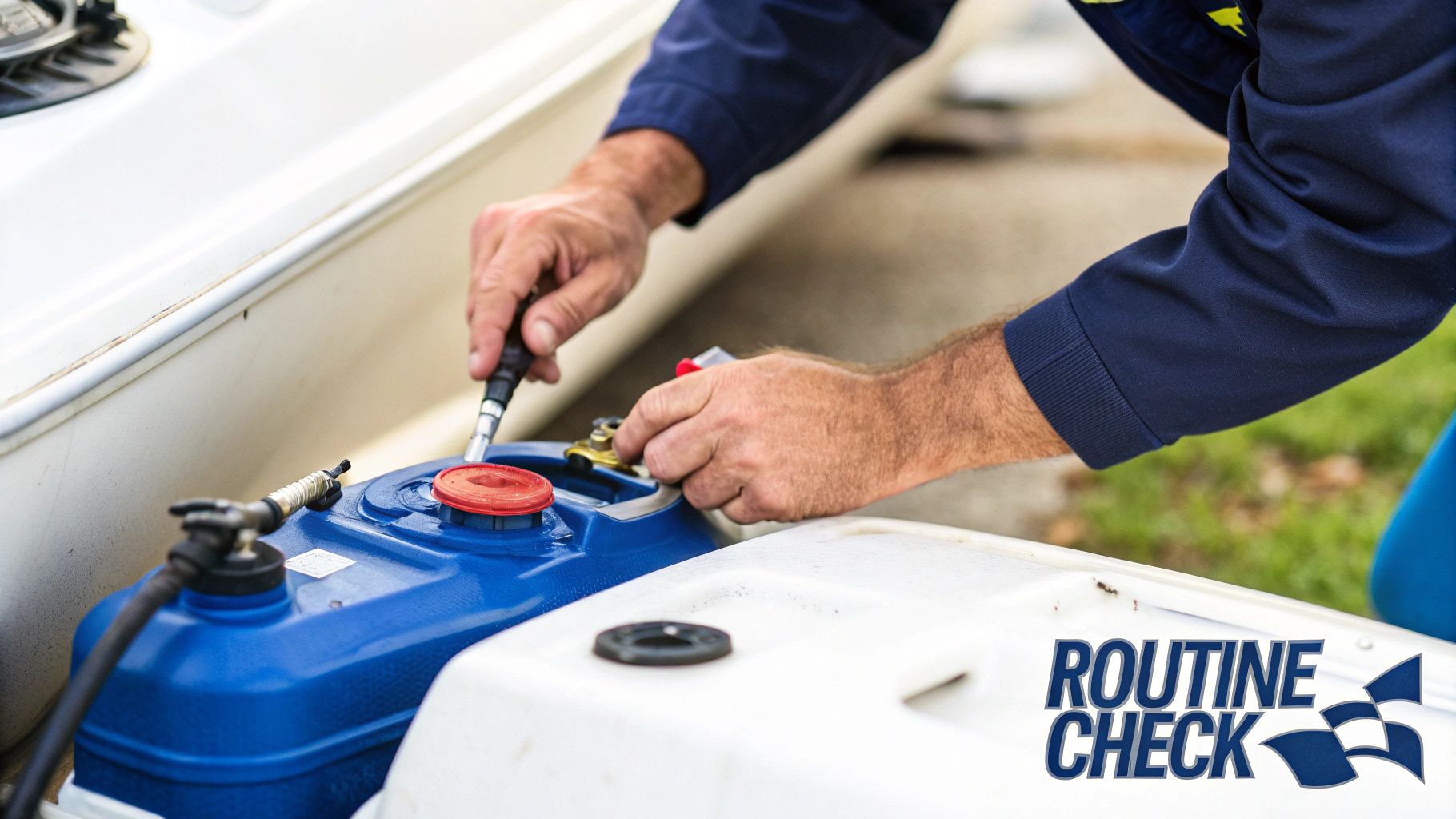
Traditional rigid boat fuel tanks, typically made of aluminum, stainless steel, or polyethylene, remain a popular choice. However, flexible fuel tanks are emerging as an intriguing alternative. Constructed from durable, specialized fabrics and polymers, these tanks offer unique advantages for specific boating applications. This begs the question: are they truly innovative, or are there potential downsides?
Weight Savings and Space Optimization
A major advantage of flexible fuel tanks is their reduced weight. They can be up to 30% lighter than comparable rigid tanks. This weight savings can lead to better fuel efficiency and enhanced boat performance. Their flexibility allows them to fit into unusual spaces within the hull.
This adaptability is especially beneficial in older boats or vessels with intricate designs. It allows boaters to maximize fuel storage without sacrificing precious storage room. Imagine trying to squeeze a rigid tank into a small, oddly shaped compartment. A flexible tank can easily mold to the space, utilizing every nook and cranny.
This adaptability makes them appealing for custom boat builds and retrofits. The growing interest in this technology is reflected in market projections. This sector is predicted to reach $2.5 billion by 2025, with an anticipated CAGR of 7% until 2033. Learn more about this growing market. This growth underscores the increasing demand for efficient and adaptable fuel storage solutions in the boating industry.
Durability and Safety Concerns
Despite the advantages, questions remain about the long-term durability and safety of flexible boat fuel tanks. Concerns about puncture resistance, fuel permeation, and performance in harsh marine environments are certainly valid. While manufacturers have made significant advancements in material technology, ensuring the tank's long-term integrity is crucial.
When Flexible Fuel Tanks Make Sense
So, under what circumstances are flexible fuel tanks a good fit? They are especially well-suited for:
- Competitive Racing: Weight reduction is paramount in racing, providing a competitive advantage.
- Expedition Vessels: Maximizing fuel capacity in confined spaces is essential for long journeys.
- Limited Access Installations: Their flexibility simplifies installation in difficult-to-reach areas.
Sticking with Traditional Tanks
Rigid tanks remain the go-to choice for many boaters, particularly when:
- Impact Resistance is Crucial: Rigid tanks offer superior protection against punctures and impacts.
- Long-Term Durability Matters: Materials like stainless steel offer proven longevity.
- Standard Tank Sizes are Sufficient: When space isn't a limitation, a standard rigid tank is often a simpler and more cost-effective solution.
Choosing the right boat fuel tank involves carefully considering the advantages and disadvantages of each type. Think about your individual boating needs and priorities. By understanding these factors, boaters can make an informed decision that ensures both safety and optimal performance on the water.
Boat Fuel Tank Installation: DIY Success or Professional Job?
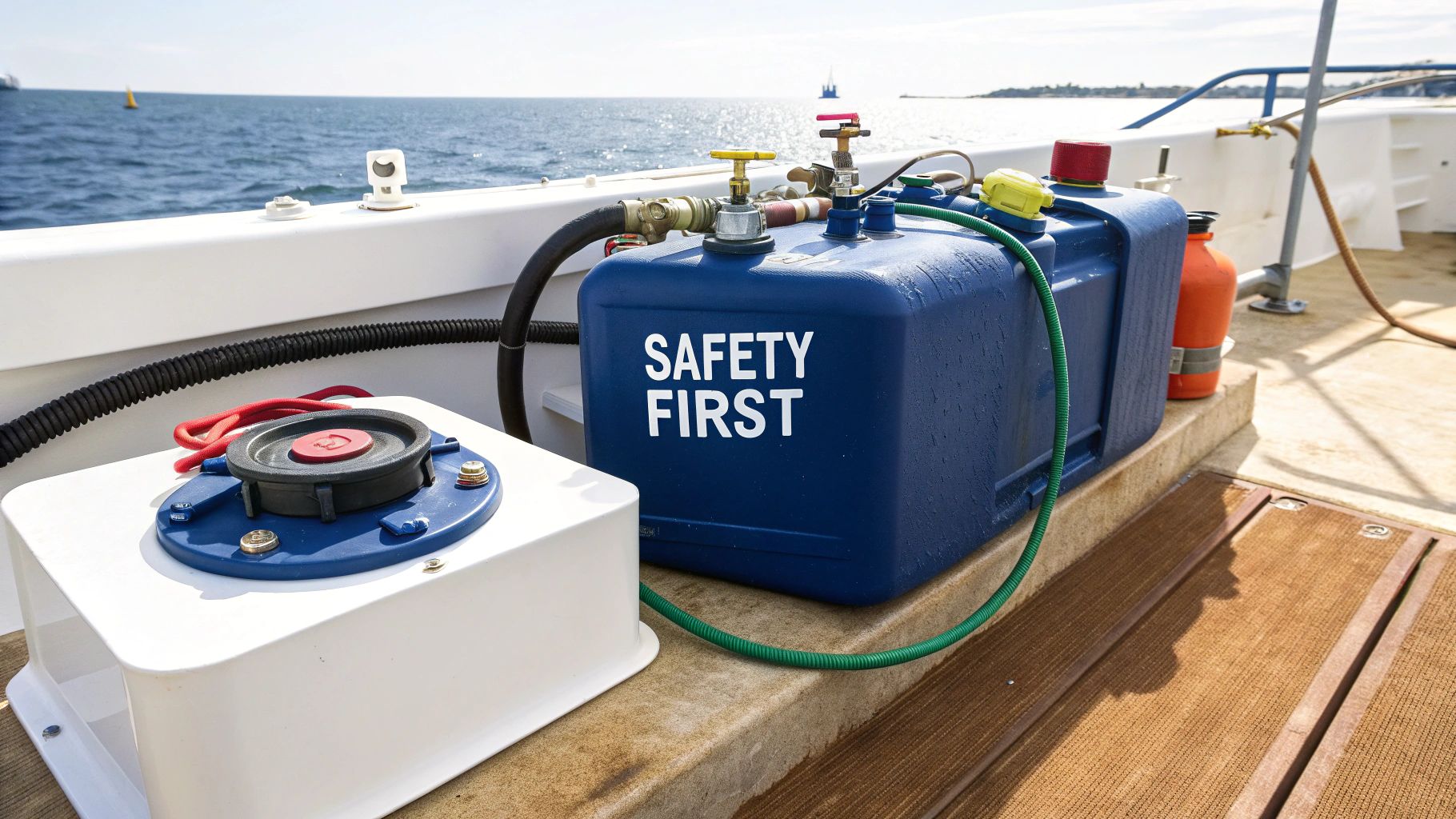
Installing a boat fuel tank is a critical process. It has implications for safety, performance, and your budget. Choosing between a DIY or professional installation deserves careful thought. This section explores both approaches to help you make the right decision.
DIY Boat Fuel Tank Installation: Challenges and Considerations
A DIY installation might seem appealing to hands-on boaters. The potential for saving on labor costs is attractive. However, this project requires specialized tools, in-depth technical knowledge, and meticulous attention to detail. It’s a far cry from a simple car battery replacement.
This job is significantly more complex. Improper venting, anti-siphon protection, or fuel line routing can lead to dangerous fuel leaks and even fires.
One common DIY mistake is underestimating proper bedding and sealing. A fuel leak can ruin your day on the water and create a serious safety hazard. It's similar to plumbing in your house – a small leak can cause significant damage if ignored. Plus, accessing tight spaces in a boat’s hull can be a real challenge, sometimes requiring partial disassembly of interior components.
Professional Boat Fuel Tank Installation: Ensuring Expertise
Choosing a professional installation provides peace of mind. Qualified marine mechanics have the expertise to handle the job's complexities. This expertise ensures a safe and reliable fuel system. However, it's crucial to remember that not all professional installations are equal. Choose a reputable technician with a proven track record.
Evaluating Professional Quotes and Expertise
When considering a professional, evaluate quotes carefully. Don’t just focus on the final price. Look for a detailed breakdown of labor, materials, and additional services. This transparency helps ensure you’re not overpaying. Ask specific questions about their experience with similar installations, especially for boats with unique requirements.
Key Safety Considerations for Boat Fuel Tank Installations
Whether you choose DIY or professional installation, prioritize these safety elements:
- Proper Venting: Correct venting prevents pressure buildup that can cause leaks or explosions.
- Anti-Siphon Protection: This feature prevents fuel from siphoning back into the tank, reducing spills.
- Fuel Line Routing: Correctly routed fuel lines minimize chafing and leaks.
The following table summarizes the key differences between professional and DIY boat fuel tank installations. It helps illustrate the advantages and disadvantages of each approach.
| Factor | Professional Installation | DIY Installation | Key Considerations |
|---|---|---|---|
| Cost | Higher upfront cost | Potentially lower cost | Factor in your time, potential mistakes, and the cost of specialized tools. |
| Time | Faster completion | Can be time-consuming | DIY requires a significant time investment and troubleshooting. |
| Skill Level | Requires specialized training and experience | Requires mechanical aptitude and attention to detail | Mistakes can be costly and dangerous with fuel systems. |
| Safety | Higher likelihood of a safe installation | Higher risk of errors and safety issues | Professional installation minimizes risk, especially for complex systems. |
Considering these factors will help you make the informed decision. Prioritizing a safe and reliable fuel system is essential for an enjoyable and worry-free boating experience.
Master-Level Boat Fuel Tank Maintenance That Actually Works
Maintaining your boat's fuel tank is essential for optimal performance, longevity, and safety. A well-maintained fuel system ensures reliable starts, smooth operation, and prevents unexpected breakdowns. Let's explore some key maintenance routines.
Identifying Early Warning Signs
Recognizing early signs of trouble can save you money on repairs. Erratic gauge readings could point to a faulty sending unit or fuel contamination. A sudden drop in engine performance might indicate clogged fuel filters or water in the tank. Regularly inspect your tank for corrosion and structural damage to prevent bigger problems.
Seasonal Care Protocols
Your boat's fuel system, like your car, needs different care throughout the year. Winter preparation is vital to prevent fuel degradation and freeze damage. Add a fuel stabilizer and ensure proper tank ventilation. Spring commissioning includes checking the entire system for leaks, damage, and contamination. Similar to a detailed project like a Cabinet Installation Guide, planning and careful execution are crucial for a DIY fuel tank install. Regular mid-season checks of fuel lines and filters will keep your boat running smoothly.
Fuel Additives, Water Separation, and Cleaning Products
Choosing the right products is critical. Some fuel additives prevent algae growth and stabilize fuel effectively, while others are less useful. Water separation techniques are essential for removing water, which can cause corrosion and engine issues. Select cleaning products carefully. Harsh cleaners can damage the tank lining, so choose a gentle yet effective product that removes sludge and debris without causing harm. Consider your tank's material when choosing a cleaner.
Troubleshooting Common Issues
Even with regular maintenance, problems can occur. Erratic gauge readings can be caused by a faulty sending unit or wiring issues. Poor engine performance may result from clogged filters, contaminated fuel, or a failing fuel pump. Fuel contamination, a frequent issue discussed in resources like this one about diesel bug Read also: More about boat fuel systems, requires immediate attention. Knowing how to troubleshoot common issues saves time and money, allowing you to fix problems quickly. Implementing these maintenance practices keeps your fuel tank in top condition, ensuring reliable performance and a longer lifespan for your boat. This proactive approach minimizes breakdowns and maximizes your time on the water.
Boat Fuel Tank Placement: The Secret to Maximum Efficiency
The placement of your boat's fuel tank isn't just about convenience. It's a crucial factor that affects performance, efficiency, and even safety. Understanding the principles of optimal fuel tank placement can significantly improve your boating experience. Just like a car's suspension affects its handling, the position of a boat's fuel tank influences its stability and responsiveness on the water.
Balancing Weight Distribution: The Key to Stability
When deciding on the ideal fuel tank location, professional boat designers carefully consider weight distribution. A centrally located tank, often positioned low in the hull, helps maintain a balanced center of gravity. This balance minimizes rocking and improves stability, particularly in rough waters. Imagine a tightrope walker using a balancing pole – the central weight helps maintain balance. A centrally placed fuel tank has a similar stabilizing effect on a boat.
Minimizing Fuel Movement: Preventing Instability
Beyond its static weight, the fuel itself can move around inside the tank, creating dynamic forces that affect stability. This movement, known as fuel slosh, can be especially problematic in choppy water, leading to unpredictable handling and potentially dangerous situations. Think of carrying a bucket of water – it’s much harder to control than a solid object of the same weight. Fuel slosh impacts a boat in a similar way.
Internal Baffling Systems: Taming the Slosh
To minimize fuel slosh, many boat fuel tanks include internal baffling systems. These baffles act like dividers inside the tank, restricting the movement of the fuel. By reducing slosh and maintaining a more consistent center of gravity, these baffles contribute to improved handling and stability.
Fuel Monitoring Systems: Maximizing Range and Efficiency
Modern fuel monitoring systems are changing how boaters manage their fuel consumption. These systems offer real-time information on fuel levels and consumption rates, empowering captains to make informed decisions about speed and throttle adjustments. This level of control maximizes range and fuel efficiency, especially on longer trips.
For instance, understanding your precise fuel consumption at various speeds allows you to select the most efficient cruising speed for your journey. Accurate fuel level monitoring also prevents running out of fuel unexpectedly, a vital safety factor. You might find additional information helpful: More boat fuel system information. The marine fuel market is constantly changing, influenced by rising fuel costs and environmental concerns. The marine fuel optimization market expanded from $12.01 billion in 2024 to a projected $13.75 billion in 2025, a CAGR of 14.5%. Learn more about this growth here. This expansion highlights the industry's increasing emphasis on efficiency and sustainability.
Repositioning Success: Real-World Examples
Many boaters have seen performance improvements by repositioning their fuel tanks. Analyses of these projects before and after the repositioning show marked improvements in stability, fuel efficiency, and overall handling. These real-world cases underscore the significant impact of fuel tank placement on a boat's dynamics. By carefully considering these principles, boaters can optimize their fuel tank placement for better performance, greater efficiency, and ultimately, more enjoyment out on the water.
Future-Proofing Your Boat Fuel Tank System
The marine industry is under increasing pressure to minimize its environmental footprint. New regulations and technological advancements are changing the way we think about boat fuel tanks. This means boat owners need to understand these changes and prepare their vessels accordingly.
Emerging Materials and Designs for Reduced Emissions
New materials and designs are key to reducing emissions. Researchers are developing lighter, more durable tanks for improved fuel efficiency. These advancements not only help the environment, but also boost boat performance. For instance, some new tank designs feature advanced baffling systems to reduce fuel slosh, leading to better handling and stability.
Compatibility with Alternative Fuels
As the marine industry shifts towards alternative fuels, ensuring your boat's fuel tank is compatible is critical. Biodiesel and ethanol blends are gaining popularity. However, these fuels can react with certain tank materials, causing corrosion or other problems. Choosing the right tank material, such as specific types of polyethylene or stainless steel, is crucial for compatibility with these alternative fuels.
Smart Tanks and Real-Time Monitoring
Technology is transforming how we interact with our boats. Smart tanks equipped with real-time monitoring are becoming more widespread. These systems give boaters accurate data on fuel levels, consumption, and even potential leaks. This information allows boaters to maximize fuel efficiency and avoid expensive repairs. Imagine an app on your phone displaying exactly how much fuel you use at different speeds and RPMs. This data enables you to make informed decisions about your boating habits.
Advanced Vapor Recovery Systems
Fuel vapors are a source of air pollution and a potential safety hazard. Advanced vapor recovery systems capture these vapors, lessening their environmental impact and enhancing safety. These systems collect fuel vapors during refueling and store them for later disposal or reuse. They are increasingly vital for meeting environmental regulations and promoting responsible boating.
Strategic Upgrades for Compliance and Resale Value
Upgrading your boat's fuel tank system isn't just about compliance; it's an investment in your vessel's resale value. Boats with modern, efficient, and environmentally sound fuel systems are more appealing to buyers. A boat with a smart tank and a vapor recovery system, for example, demonstrates a commitment to sustainability.
By understanding the future of boat fuel tanks, you can make smart upgrades that benefit both the environment and your finances. Choosing a system compatible with alternative fuels and incorporating smart technologies will prepare your boat for the future of marine fuel. These proactive upgrades boost performance, efficiency, and resale value, making them a wise investment.
Ready to upgrade your boat's fueling system for a cleaner, more efficient future? Explore the solutions offered by CLiX Fueling Solutions and experience the difference!

